-

Study For Nymphs Finding The Head Of Orpheus
Nymphs gather in the dim forest, their faces lit with horror and fascination as they cradle Orpheus’ severed head. The water ripples around them, silent witness to the aftermath of violence. His lifeless eyes stare past them, still holding the echo of a song.
-
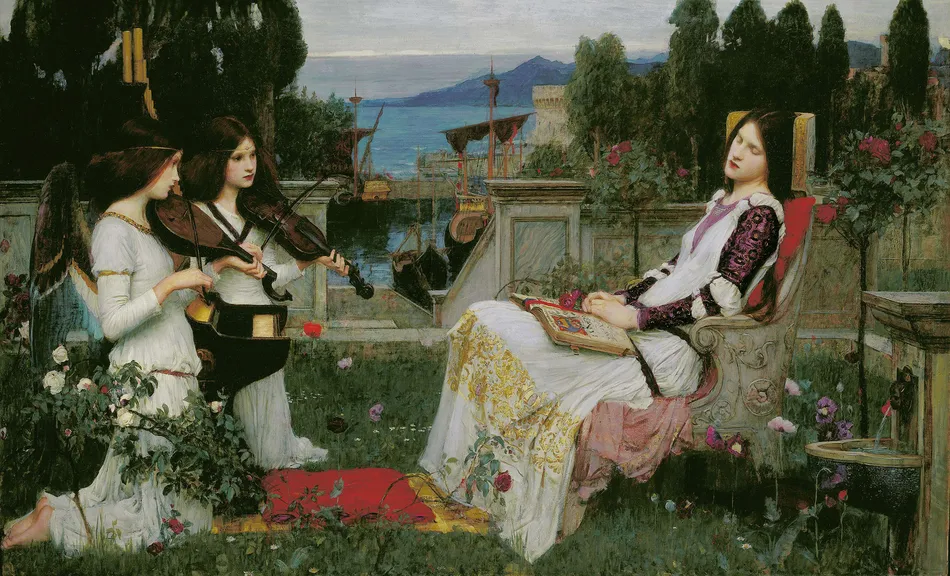
St Cecilia
A saint sits enraptured, fingers hovering above the strings. An angel leans close, whispering divine melodies only she can hear. The air hums with silent music, her face alight with celestial inspiration. Golden light spills across her robes, blurring the line between earthly devotion and heavenly communion.
-

Fair Rosamund
Rosamund’s delicate fingers hover over the golden thread, her gaze distant. The labyrinth’s walls loom behind her—silent, foreboding. A single misstep, and the queen’s wrath will find her. The tapestry in her lap remains unfinished, its pattern as tangled as her fate.
-
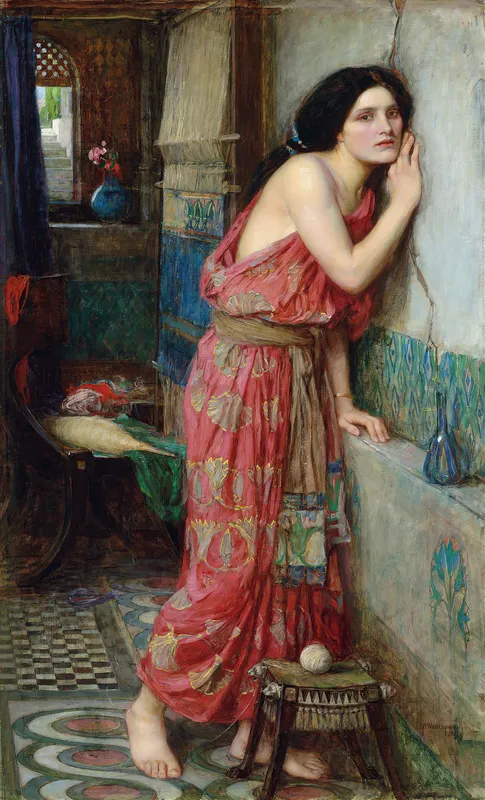
Thisbe
A bloodstained veil clings to the mulberry tree—Thisbe’s last trace. The fabric flutters, whispering of love severed by cruel fate. Beneath the branches, shadows deepen, swallowing the promise of two voices that once met in secret. The berries blush dark, forever marked by tragedy.
-
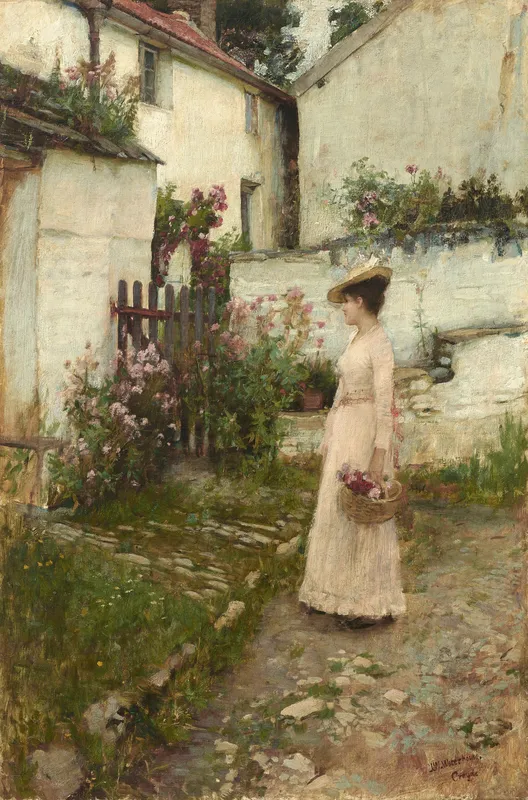
Gathering Flowers in a Devonshire Garden
A woman kneels among blossoms, her hands brushing petals as sunlight filters through the leaves. The garden hums with color—pinks, whites, greens—as she gathers flowers into her skirt, lost in the quiet rhythm of picking. The air feels warm, alive with the scent of crushed stems and earth.
-
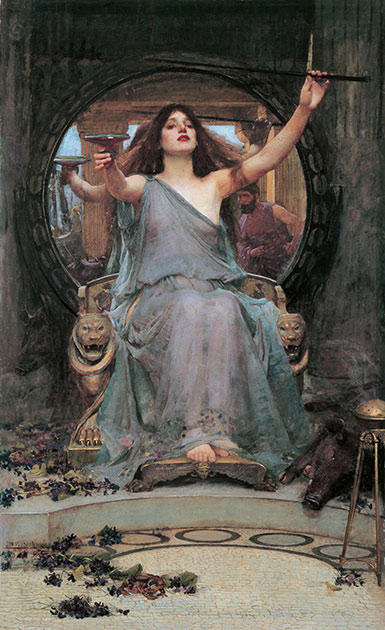
Circe Offering the Cup to Odysseus (1891)
Waterhouse’s “Circe Offering the Cup to Odysseus” depicts the sorceress Circe offering a magical potion to the hero Odysseus.
-
-2.jpg)
Juliet (1898)
John William Waterhouse’s 1898 painting “Juliet” portrays the innocence and melancholy of Shakespeare’s heroine.
-
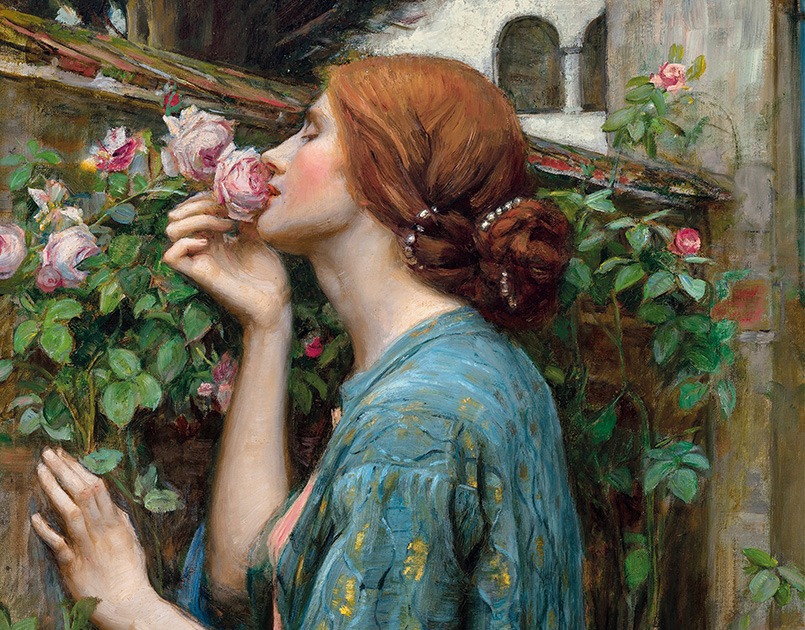
The Soul of the Rose (1908)
“The Soul of the Rose” is an oil painting created by John William Waterhouse in 1908. It portrays a red-haired woman deeply inhaling the scent of a rose in a garden. The inspiration for the painting comes from Alfred Lord Tennyson’s poem “Maud,” specifically the line “And the soul of the rose went into my […]
-
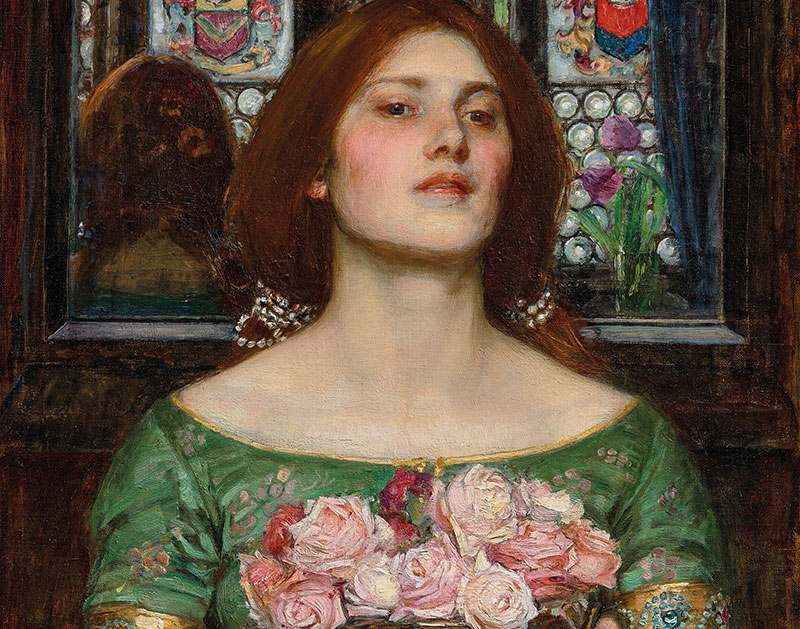
Gather Ye Rosebuds While Ye May: Waterhouse’s Vanitas for the Edwardian Age
John William Waterhouse’s 1908 masterpiece Gather Ye Rosebuds While Ye May (118x157cm, oil on canvas) reimagines Robert Herrick’s 17th-century poem To the Virgins through an Edwardian lens.